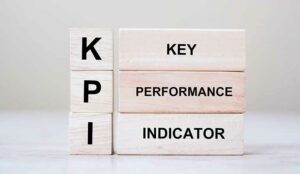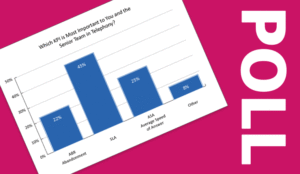What is a Key Performance Indicator?
Key performance indicators (KPIs) are also referred to as metrics.
Key performance indicators are measurements of various aspects of how businesses and processes perform. They fulfil two main objectives in the short and long term.
In the short term, KPIs show the current performance of an operation using metrics which can be understood immediately. For example, a contact centre’s occupancy level shows what percentage of agents are engaged in call-related activity moment to moment.
In the long term, KPIs can present more detail about how the contact centre performs generally, including metrics that take time to gather.
For example, First Contact Resolution can only be meaningfully understood over an extended period.
Common Call Centre Metrics
- Hold time
- First Contact Resolution (FCR)
- Average Speed of Answer (ASA)
- Average Handling Time (AHT)
- Customer Satisfaction (CSat)
- Call abandon rate
- Conversion Rate
- Right-Party Contact
- Occupancy
Why Measure?
KPIs are gathered to reliably inform change. This might be a small, immediate change like fielding more agents to decrease occupancy. Or it might be a larger change to the contact centre’s approach, such as increasing the budget to recruit more agents. This kind of optimisation can only be undertaken when data has been collected to inform it.
Contact centres also track KPIs to ensure adherence to their Service Level Agreement (SLA). If the SLA is not being met, a close analysis of KPIs can help to identify where changes need to be made.
Gathering historical KPI data also enables contact centres to benchmark performance. By benchmarking, the contact centre can project future performance while also developing its approach to staffing levels and scheduling.
Knowing What to Measure
There are a huge number of potential metrics, and knowing which to track closely can be difficult. KPIs are important because of the information they provide, but they are not an end in themselves – their use should be aligned to the strategic goals of the organisation.
The relationship between metrics is complex, and, to avoid short-term thinking, planners should understand them as an interconnected web rather than isolated statistics.
For example, a manager might wish to increase Customer Satisfaction, which they know is strongly correlated to the Average Speed of Answer.
The ASA can be reduced by limiting handling time so, superficially, asking agents to speed up calls would seem to achieve the goal.
Obviously the flaw in this plan is the fact that shorter calls are less likely to achieve resolution for the customer. Less resolution means decreased satisfaction, and a higher chance of the customer calling a second time.
Knowing Who to Measure
Different positions within the Contact Centre and BPO need to know different metrics.
For example the Senior Management Team might want to look at Average Handling Time (AHT), Customer Satisfaction (CSat) or Net Promotor Score (NPS).
The KPI of a Team Leader in BPO might be Hold time, Average Speed of Answer (ASA), Call abandon rate or Conversion Rate.
Author: Jonty Pearce
Published On: 13th Jan 2017 - Last modified: 12th Aug 2025
Read more about - Definitions, Abandoned Calls, Average Handling Time (AHT), Average Speed of Answer (ASA), Customer Satisfaction (CSAT), First Contact Resolution (FCR), Key Performance Indicators (KPIs), Occupancy, Terminology







































